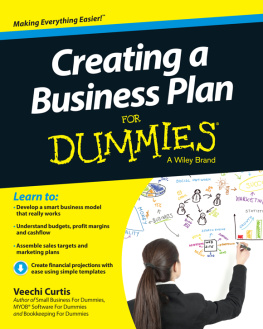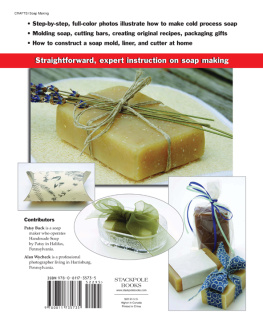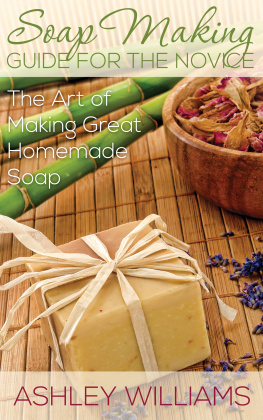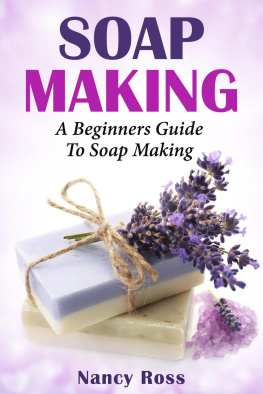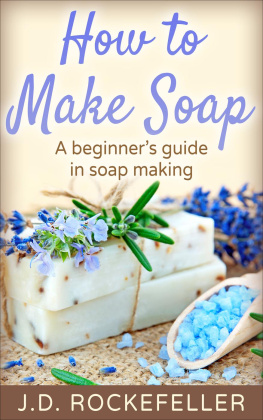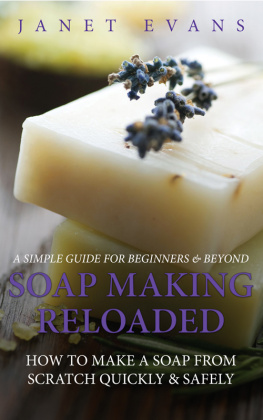Amanda McCarthy - Ultimate Guide To Soap Making
Here you can read online Amanda McCarthy - Ultimate Guide To Soap Making full text of the book (entire story) in english for free. Download pdf and epub, get meaning, cover and reviews about this ebook. year: 2013, genre: Home and family. Description of the work, (preface) as well as reviews are available. Best literature library LitArk.com created for fans of good reading and offers a wide selection of genres:
Romance novel
Science fiction
Adventure
Detective
Science
History
Home and family
Prose
Art
Politics
Computer
Non-fiction
Religion
Business
Children
Humor
Choose a favorite category and find really read worthwhile books. Enjoy immersion in the world of imagination, feel the emotions of the characters or learn something new for yourself, make an fascinating discovery.

- Book:Ultimate Guide To Soap Making
- Author:
- Genre:
- Year:2013
- Rating:3 / 5
- Favourites:Add to favourites
- Your mark:
- 60
- 1
- 2
- 3
- 4
- 5
Ultimate Guide To Soap Making: summary, description and annotation
We offer to read an annotation, description, summary or preface (depends on what the author of the book "Ultimate Guide To Soap Making" wrote himself). If you haven't found the necessary information about the book — write in the comments, we will try to find it.
Ultimate Guide To Soap Making — read online for free the complete book (whole text) full work
Below is the text of the book, divided by pages. System saving the place of the last page read, allows you to conveniently read the book "Ultimate Guide To Soap Making" online for free, without having to search again every time where you left off. Put a bookmark, and you can go to the page where you finished reading at any time.
Font size:
Interval:
Bookmark:
Soapmaking Explained
- ?
Introduction
There is nothing quite as satisfying as creating something with your own hands. In today's over-commercialized world, it's easy to forget that once upon a time, we made our own staples: we grew our own grain and milled it into flour; we grew our own corn; we milked our own cows; and we made our own cleaning products.
Today, autoimmune disorders, childhood developmental disorders, and allergies are rising sharply in the industrialized countries but not in the lesser-developed parts of the world. Granted, they have their own worries - but it's striking that the rate of allergy in the industrialized world is 30% (one in three people!) while in the third world, it's virtually unheard-of even though peanuts in the form of peanut milk and peanut butter are among the first foods offered to infants. Some point to an obsession with hygiene, saying that childhood exposure to a combination of animals, plants, and dirt (what we sometimes call "Nature") is needed for a fully mature, fully functioning, and fully stable immune system but people in the third world also practice hygiene. Just try walking into an East Indian or African peasant woman's house with dirty shoes to learn the truth of that! This is why many people are taking a closer, harder look not at cleaning, but at what is in the cleaners.
"That dreaded soap scum!!!" intones an announcer ominously while a woman's eyes flare wide in humiliated horror.
"Those dirty rings!" groans a woman in despair before she ogles the camera with a shake of her head and a rueful smile.
"Kills 99.9% of household viruses and bacteria!" and thousands of little cartoon bugs die dramatically.
Unlike soap made at home, many commercially-produced bars have had the glycerin stripped out, a process that leaves them harsh and drying to the skin. To fix that, moisturizers of lesser quality are put in. The scents and dyes are synthetic - this is great for long-lasting smell and good looks, but not only are many of the fragrances and dyes harmful to humans, but also the word "fragrance" can cover up a lot of sins: something in the batch not quite according to the rules? "Oh, it's a fragrance stabilizer ". Another effect of all these drying agents is itchy skin which can be soothed by... bathing again!
While we don't want our children walking around looking like homeless waifs, we also don't want their tiny bodies and delicate neural systems exposed to an onslaught of toxic, bioaccumulative chemicals. It makes sense, then, to do what we can to return to a more natural way of life and that means spending a few hours every few months to make our own soap: smoothing, softening, nutritive soap that doesn't have any of the 'X-' and 'Z-' loaded ingredients such as butylated hydroxyanisole and triethanolamine. We also have more control over what goes in the soap - teenager with acne? There's a soap for that. New baby in the home? There's a soap for that. Oily skin, dry skin, blotchy skin? Soap, soap, and soap. Shaving? Yep - there's even soap for that, too (after all, it's what we used before the invention of shaving cream in a can!).
Making soap used to involve a lot of trial and error - you want enough lye to convert as much of the fat as possible to soap but you don't want so much lye that the soap ends up harsh and burns the skin (probably how the "kids hate bath time" thing got started - who'd want to take baths if you knew it was going to hurt?). Once the saponification values of various oils were worked out, the end product was vastly improved but the front-end calculations got way more complex. Today, no worries: there are many online calculators that can do all the math for you. Just plug in what it is you want and how much of it and the webpage will obligingly do all the math and spit out a prettily formatted recipe, all ready to go.
One thing has not changed, and that is the intrinsic nature of Sodium Hydroxide. It's still dangerous as all-get-out. Please pay close attention to the " " sections. Go no further until you have memorized everything in them and follow the instructions! If you are prone to getting distracted while cooking dinner (e.g., you're forced to order in pizza because you forgot about the stew thanks to a rousing game of Candy Crush), then call a friend to help you keep on track and prevent what could be dire consequences.
Start with the simpler recipes, such as a Castile-type soap. This will allow you to become familiar with the process and what to expect at the various stages and you'll also begin learning the quirks that are unique to your soap. If a dozen soapmakers use the same recipe, the result will be a dozen variations: everything from the weather that day to the temperature of the room to the speed of the blender to how fast or slow the soap was cooled in the molds has an impact on the final product. That's why your soap will be special and unique - because it's made by you!
Once you've nailed the technique, move on to the more adventurous recipes and the more advanced techniques. If you want to inspire and involve your family, the Cool Projects section has a lot of fun things you can do safely, even with tiny tots!
I hope you find this book of value in introducing you to the fun, fascinating world of alchemical mystery that is soap-making.

Soap Glossary of Terms
| Additive | An ingredient that is not required for the saponification process. This includes scents, oils, medicaments, colorants, and therapeutic ingredients such as natural clay. |
| Caustic | A caustic is a chemical that can cause burning through chemical reaction as opposed to heat. Lye is a caustic, as can be determined by its alternate name, "caustic soda". |
| Deliquescence | from the Encyclopedia Britannia: "The process by which a substance absorbs moisture from the atmosphere until it dissolves in the absorbed water and forms a solution. Deliquescence occurs when the vapour pressure of the solution that is formed is less than the partial pressure of water vapour in the air. All soluble salts will deliquesce if the air is sufficiently humid." |
| Exothermic | Characterized by the release of heat, often due to a chemical reaction. Soap is made as the product of an exothermic reaction between lye and fat. |
| Flash Point | The temperature at which a flammable vapour will ignite. |
| Gel Phase | A phase some soaps go through when the thickened liquid becomes transparent briefly before cooling and returning to an opaque state. |
| Hygroscopic | Describes a material that can pull moisture from the air. |
| Lye | Sodium hydroxide or Potassium hydroxide, also called "caustic soda" |
| Lye Discount | A percentage of the lye normally required to completely saponify a given quantity of fat that is with-held from the process, ie: if there is a 5% discount, it means only 95% of the full amount of lye needed is used. |
| Lye Solution Preparation | The process of preparing the lye needed for saponification: |
- Prepare in an area that is well-ventilated with fresh - not recycled - air, as the vapors released during this process contain lye molecules.
- If preparing large batches, either go outdoors or wear an appropriate respirator mask.
- Ensure running water and a sink are close by in case of emergency - if lye contacts skin, the area needs to be flushed with water for twenty minutes.
- The slightest bit of lye contacting the eyeball can cause blindness - always wear safety glasses or goggles.
Font size:
Interval:
Bookmark:
Similar books «Ultimate Guide To Soap Making»
Look at similar books to Ultimate Guide To Soap Making. We have selected literature similar in name and meaning in the hope of providing readers with more options to find new, interesting, not yet read works.
Discussion, reviews of the book Ultimate Guide To Soap Making and just readers' own opinions. Leave your comments, write what you think about the work, its meaning or the main characters. Specify what exactly you liked and what you didn't like, and why you think so.

